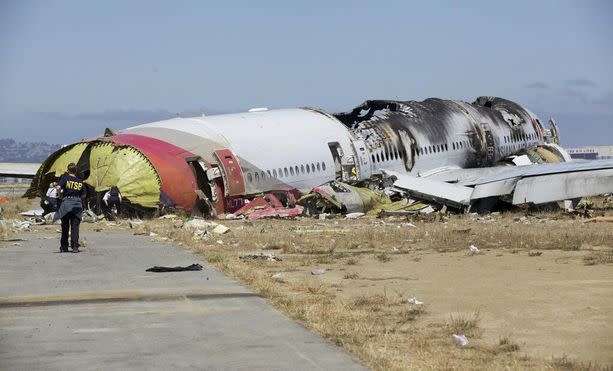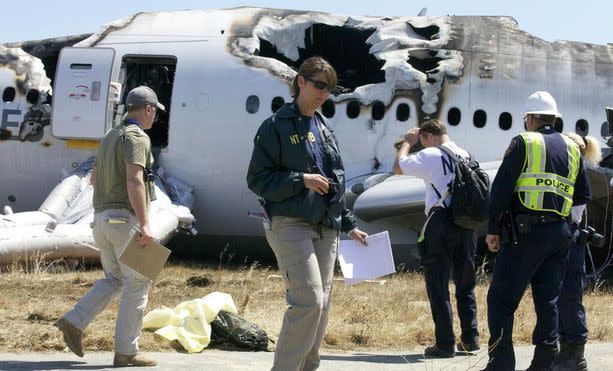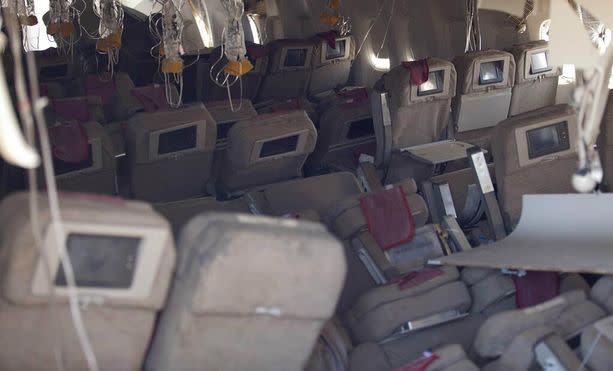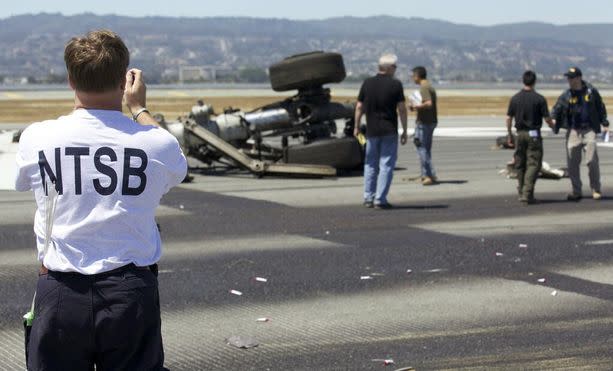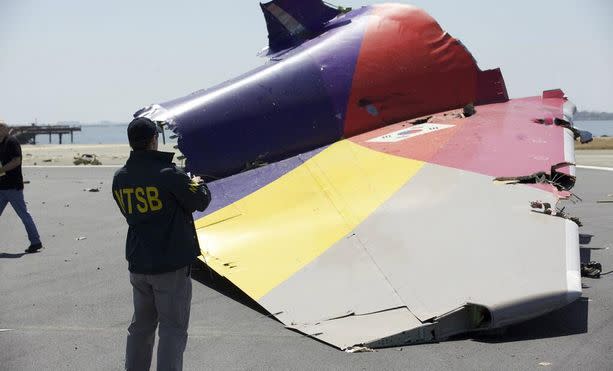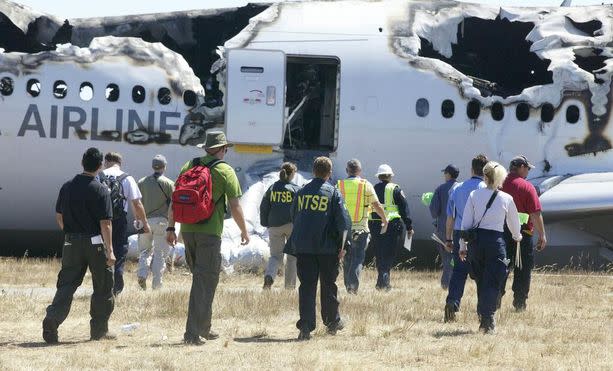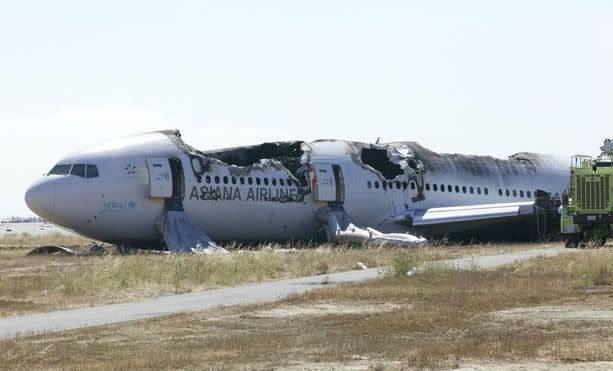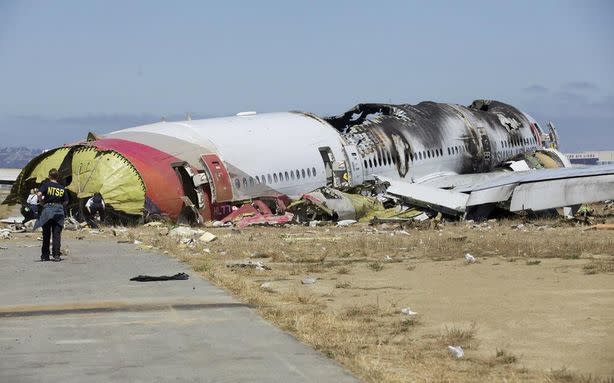Here's What We Know About the Asiana Flight 214 Crash (So Far)
On Sunday, the National Traffic Safety Board released their preliminary findings on the crash of Asiana Flight 214. And while it's not yet a crystal-clear picture of the events leading to the crash in San Francisco that killed two and injured over 100, an emerging timeline is giving a frame to the narrative of what went wrong.
RELATED: Is the 'Enemies List' the New 'Death Panels'?
The NTSB held a press conference laying out details of the events leading to the crash, based on the flight data and cockpit voice recorders, the the agency said contained "good" data on the crash. Here's their timeline, so far:
RELATED: Google's Privacy Admission, the Soda Industry's Allies, a Silent All-Star Chef
Early approach — everything seems normal.
According to NTSB spokesperson Deborah Hersman, there's no indication, i.e. discussion of the approach among the crew, that anything was off as the plane began its approach. The plane was cleared for a "visual landing," but the weather was favorable for such a maneuver. At San Francisco, the airport's glide slope indicator was offline. That piece of equipment is one tool available to pilots to determine their altitude upon landing.
RELATED: The Boeing Dreamliner's Long Road to FAA Approval
Seven seconds from impact — a call increase speed.
Flight 214 was way below normal landing speeds, according to the NTSB: the plane was "significantly" below the target speed of 137 kts, with the throttle idling (according to the AP, this is unusual for a wide-body jet like the Boeing 777, seconds away from a landing). While the agency didn't specify exactly how much more slowly the flight was going, NTSB spokesperson Deborah Hersman noted that "we’re not talking about a few knots.” The plane begins to accelerate, just over 7 seconds before impact.
RELATED: Did a Piece of a 9/11 Plane Just Turn Up in an Alley Near Ground Zero?
Four seconds from impact — the plane is about to stall.
According to the NTSB, this is when the stick shaker activated. The stick shaker does what it sounds like it does: it shakes the control stick. When that happens, it's a warning to pilots that the plane is about to stall. Usually, a pilot would increase speed in response, which is exactly what happened for flight 214. And according to the NTSB, their throttles responded properly, indicating that engine failure or malfunction probably didn't play a role in the crash.
RELATED: Boeing's Dreamliner Could Make Flying Better
One and a half seconds from impact — attempt to abort the landing.
At this point, someone on board called for a "go around," or an aborted landing, to circle back and try again. But apparently, it was too late.
Impact — the plane hits the seawall.
Based on witness accounts, the plane was very apparently coming in too low before it hit the seawall, crashed into the ground, losing its tail in the process. While the NTSB did not release the archaeology on how the plane was too low, or how its slow speed played into the impact, some aviation experts are alarmed by the juxtaposition. There's a horrifying video of the crash that emerged today, which, among other things, shows just how astonishing it is that the death toll wasn't much higher. Over at The Atlantic, James Fallows has a thorough round-up of what professional pilots are saying about what may have caused the crash.
According to CNN, many of the injured were sitting towards the back of the plane. Of the 182 hospitalized after the crash, 19 are still in the hospital, with six in critical condition. Injuries range from paralysis (there were "several" snapped spines, according to the San Francisco Chronicle) to abdominal injuries related to the seat belts, to road rash.
There's another troubling question emerging about the crash, concerning one of the two fatalities: according to the local fire department, one of the two teenage girls who died in the crash may have been killed by an emergency vehicle after the fact. The city's medical examiner is performing an autopsy to determine her cause of death after authorities noticed injuries consistent with being run over, according to Retuers.
On Twitter late on Sunday, the NTSB released several detailed photos of the crash:
More details about the crash will no doubt emerge as the NTSB continues their investigation, and the flight's crew gives their account of what happened.
Photos: all photos via the National Traffic Safety Board
